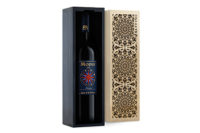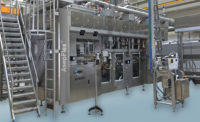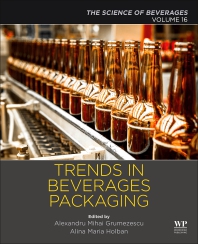New Facility Doubles Packaging Capacity
By ELIZABETH FUHRMAN
As New Belgium Brewing grows, bottling and brewing are ready to meet the demands
New Belgium Brewing, Fort Collins, Colo., saw sales volume grow to 437,000 barrels last year. With the brewer anticipating at least an 11 percent increase in production to 485,000 barrels this year and launching a new organic beer, Mothership Wit, New Belgium needed to expand its bottling and packaging capabilities.
The brewer already had brewing and fermentation
capacity in its brewhouses to go well beyond its capacity in packaging. New
Belgium’s old packaging room holds two filler lines, one of which
bottles 300 bottles per minute and the other fills at 120 half-barrels
an hour. So it made sense for New Belgium to get its facilities in
sync to have all its assets working together.
By building a new 55,000-square-foot bottling and
packaging hall, the brewer doubled its capacity to 850,000 barrels. The
plant, which cost approximately $21.5 million to build, includes a new
bottle filler, case packer and robotic palletizer. New Belgium operates its
brewhouses with environmentally friendly equipment, and also took into
consideration technology and building features that were environmentally
conscious for the new packaging hall. The company spent $11.5 million on
the building and $10 million on the new technologically advanced equipment.
Planning ahead
Planning for the new hall begin in March 2006.
“It’s like a custom home,” says Jim
Spencer, engineering director. “You know what your criteria for
success are. You know what capacity you need. You know what products you
need to run.”
New Belgium put together all of its basic criteria and
building specifications, and went out to bid. The brewer narrowed the
search down to five equipment suppliers and line integrators to partner
with, and then narrowed its selection down to one.
Equipment selection and finding the right layout were
some of the trickiest parts of the process. “We probably had
somewhere between 50 and 100 layouts before we decided on one,”
Spencer says.
The building project stuck to its schedule, and all
the equipment was delivered on time. The key moment for the building was
when the epoxy flooring system was ready for workers to start standing on
and the line installation could begin. With the plant finished this April,
production began in May and by June the company was running at 70 percent
efficiency.
Technology forward
New Belgium used a mix of technology because it was
important for the company to get the new capacity online and opening
efficiently for the summer, Spencer says.
“To that end, and in the spirit of New Belgium,
we went and did some innovation,” he says.
One of the three main areas of innovation was the
electronic filler, which is the first to be used in the United States for
brewing.
“With the technology of the electronic fill, we
think that’s the way the whole industry is going,” Spencer
says. “A lot of European fillers are that way now, and the United
States is slowly thinking about making a transformation.”
“Within the electronic technology, it gives you
better feedback on diagnostics, control of your fill heights and reduces
CO2 consumption,” Spencer says. “It makes it a lot easier to
changeover and the changeovers are quicker.”
The filling process in the new packaging hall begins
with beer from pre-run storage tanks in the fermentation cellar that is
pumped through 600-foot beer lines to the new filler. New Belgium’s
old bottling line, which is still used in its original packaging room,
bottles at 300 bottles per minute. The new line more than doubles that
capacity at 700 bottles per minute, and brings the brewer’s
capability to 850,000 barrels a year.
New Belgium also installed a new case packer. The old
technology used an end-loading process where a box is opened and the
bottles are placed in the end. The new case packer features wraparound
technology that folds the whole case around the incoming bottle.
This technology provides a big shift from New
Belgium’s old line, which used a reshipper package. The empty glass
used to arrive in a six pack or case that was emptied for filling and
repackaged at the end of the line. New Belgium now receives its glass in
bulk.
“We bring in cartons in flat corrugates and then
we make the case instead of having the case premade,” Spencer says.
Cases are made by feeding corrugates under the
bottles, and the case packer places bottles on top. Next, the case
packer’s partition inserter takes partitions that come in stacks and
folds them up, aligns them, and drops into place between the bottles. The
case packer then finishes a case by folding the corrugate, wrapping it
around the bottles and gluing it.
The new equipment has allowed New Belgium to reduce
its downtime for changeovers, since the machine that makes the cases and
the machine that makes the six packs are separate.
“The way we set it up, we actually have two
packaging centers, so we don’t need to shutdown,” Spencer says.
“We just make a change in the conveyor, and we keep
running.”
The robotic palletizer is the third piece of new
technology, and it is the first in the United States. The robotic arm picks
cases off the line and stacks them for wrapping. The robotic system makes
palletizing tasks more accurate and eliminates the burden on the workforce.
The new packaging hall also contains an integrated
warehouse production facility. The warehouse operates on a just-in-time
basis, and New Belgium doesn’t keep any product onsite.
“We have trucks at the dock, so as soon as it
comes off the palletizer and gets wrapped, it goes straight to a
truck,” Spencer says.
All of the company’s raw materials come into the
facility on a just-in-time basis as well to minimize inventory onsite.
Warehouse employees work in conjunction with the packaging line employees
to keep the line running. Currently, New Belgium’s packaging hall
operates with eight employees on two 10-hour shifts five days a week.
Brewing masters
New Belgium produces beer in two brewhouses. In the
original brewhouse, called Brewhouse One, New Belgium houses a 100-barrel
system for secondary brands such as Sunshine Wheat and Abbey and Trippel
Belgian Style Ales.
In Brewhouse Two, which was added in 2002, the brewer
holds a 200-barrel system that is used for making the company’s Fat
Tire Amber Ale. Of the 485,000 barrels New Belgium will produce this year,
Fat Tire makes up about 70 percent.
Brewhouse Two contains four kettles decorated around
the circular edge with tiles that feature designs of New Belgium packaging
and the bike ride on which co-founder Jeff Lebesch named the company.
Additionally, Brewhouse Two and the whole building hold numerous daylight
sensors, which turn lights on if enough natural light isn’t provided
and shut off lights when the room is empty. The windows in the kettle room
also have sensors, so when the temperatures reach a specific degree in the
summer, the windows will open and vent the air outward. Some of the wood
used for Brewhouse Two as well as the new packaging hall is beetle-killed
pine, which is wood from pine trees that were killed by beetles, instead of
cutting living trees.
Malted barley is kept in silos. The grains from the
malt facility make a rustling sound through the pipe as the grain enters
the mash tun, the first of the four kettles in the brewing process. The
malt and barley are seeped in 1,100 gallons of water and heated. By heating
the ingredients, the starch inside the grain is converted to sugar. The
sugar provides a food source for the yeast that will be added later in the
fermentation process. Depending on which beer is being produced, the mash
spends about 60 to 90 minutes in the kettle.
Next, the solids are separated from the liquid in the
lauter tun, which is essentially a big strainer. Large revolving rakes plow
through the bed of mash, creating channels through which the wort, as the
liquid is now known, can journey out of the vessel. The remaining grain is
sold to cattle farmers, and the wort is transferred to the brew kettle.
New Belgium employees have nicknamed the brew kettle
Merlin because the cone on top of the kettle resembles a wizard’s
hat. The cone on top actually disguises a thin coil plate boiling system,
which acts as an internal steam-jacket that helps the kettle conserve
energy.
As the wort enters the top of the kettle, it is spread
into a thin layer, which uses about 65 percent less energy to heat than
traditional methods. The wort then is pumped up and over the top of the
cone. The coils are hot, so the wort boils immediately, releasing unwanted
aromas, thoroughly dissolving hop oils, and fusing protein particles. These
particles are then forced into the middle of the whirlpool, where they fall
out of solution, and are removed from the wort. This whole process takes
about half the time as a traditional kettle.
Through a heat exchange process, a vapor condenser
then captures the steam evaporating from “Merlin,” and uses it
to heat the water for New Belgium’s next brew.
After the boil, the wort is cooled and one of five
yeast strains is added for fermentation. New Belgium propagates its own
yeast cultures in a lab for five days. The yeast can be used up to five
times for five brews.
New Belgium possesses 16 2,000-hectoliter tanks, 16
720-hectoliter tanks and 14 360-hectoliter tanks. Employees in the
fermentation room pitch in the yeast and monitor and manipulate the growth
of the yeast through temperature change patterns. The yeast breaks the
sugars into alcohol and CO2. The employees take measurements every couple
of hours and count yeast cells. They also spice the beer for seasonal and
specialty brews.
After a few weeks, the fermented product is cold
filtered. As the beer heads into beer tanks, CO2 is injected into the line
for additional carbonation. Certain New Belgium beers such as the Abbey and
Trippel Belgian Style Ales are bottle-conditioned beers, in which the sugar
and yeast do their work right in the bottle.
Quality first
New Belgium conducts a number of quality assurance
tests, both in and outside of the lab. For example, the quality assurance
team conducts a series of tests before the beer runs to the new packaging
hall or the original bottling room. The company also has a quality
assurance and sensory libation lab onsite where a head technician with a
very calibrated palate trains the whole New Belgium staff on how to taste
beer, determine if a beer is out of spec, and if so, what the problem is.
“The whole idea behind a sensory lab is getting
people to understand what beer should taste like and what beer should not
taste like,” says Bryan Simpson, media relations director.
New Belgium also uses a field quality assurance team.
Locally, the company employs someone who rides around on a bike and tests
all the draft systems and makes sure everything is clean. The brewer also
has a Southwest and a Northwest team to monitor draft systems.
“The beer can be in pristine condition, but if
you have a bar that’s not cleaning their draft line, then the last 20
feet of it going through a dirty hose can throw your flavor way off,”
Simpson says. “That’s why we spend a lot of energy on field
assurance.”
Packaging hall’s green design elements
New Belgium Brewing’s new packaging hall
features efficient high-tech equipment and green technology. The following
are some of the environmental features of the new facility:
• Heating, ventilation, air-conditioning and cooling
uses displacement ventilation technology, and direct/indirect cooling, which is
Freon free and reduces energy costs. The cooling towers also use
technology to treat water without using chemicals.
• The snowmelt system eliminates the need for deicing
chemicals, gravel and snow plows.
• The plant uses high efficiency T-5 lights, and includes
solar tubes and a skylight with baffles to provide lighting for
production areas. Stepped lighting controls optimize the use of day
lighting.
• The building’s walls and roof use SIP panels
with R-38 insulation, along with high- performance window glazing.
• Laser/wax coding on bottles, and no use of high VOC
inks.
• The new filler is fully electronic and reduces CO2
usage.
• The building materials contain recycled
corrugated aluminum; beetle-killed pine wood for trim and doors; low
VOC paints; recycled carpet material; countertops and sills from
granite remnants; recycled plastic toilet partitions; wheatboard
break room cabinets; showers and break room counters made of
terrazzo with reclaimed amber glass; where appropriate, decorative
stained concrete flooring to eliminate the need for floor
coverings; and tectum (aspen fiber) ceiling panels.
• Water used to rinse the inside of the bottle is
recovered and reused on the final exterior rinse and provides the water
for the vacuum pump seal.
• The CIP system was designed with a water recovery
tank to recover final rinse water and use as a pre-rinse on the
subsequent cleaning cycle.
• The company partakes in just-in-time shipping.
• Rapid charge forklift that reduces emissions from
battery charging, uses less water and has greater battery performance and
fewer overall battery purchases.
• Recycling area for bailing cardboard and
crushing glass.
• Sound absorption decking keeps the hall at less than
85 decibels.
• The site contains porous concrete sidewalks, and a landscape design that uses xeriscape principles. The site lighting and landscaping are designed to eliminate light trespass.
• The roof drains to biowales to maximize
infiltration and cleaning of storm water rather than discharging
dirty storm water to the river.



